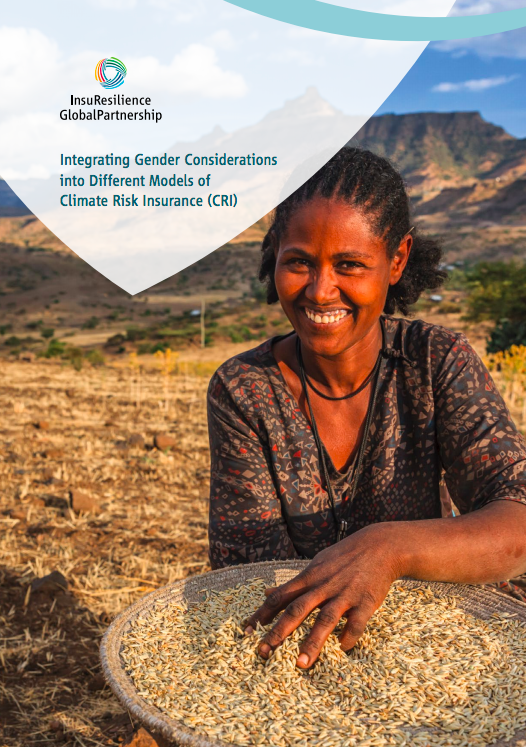Integrating Gender Considerations into Different Models of Climate Risk Insurance (CRI)

SUMMARY
Gender-responsive Climate Risk Insurance (CRI) schemes can provide risk protection that addresses differences in women and men’s vulnerability to both climate risks, and disaster-induced wellbeing loss. Within this framework in late 2018 the InsuResilience Global Partnership made a clear commitment to take proactive steps to integrate an intentional focus on gender within the execution of its mandate. This commitment was informed by the findings of an initial background paper ‘Applying a gender lens to climate risk finance and insurance’ which identified a gap in the exploration of the gender-dimensions of different models of CRI. The Partnership has subsequently adopted the InsuResilience Vision 2025 to provide climate and disaster risk finance and insurance (CDRFI) to 500 million poor and vulnerable people in developing countries. Building on this, the Partnership has commissioned this study, based on desk research and interviews with a range of international stakeholders. It explores the case for integrating gender and a focus on women into different CRI schemes and provider types at the macro-, meso- and micro-levels.
The case for integrating gender considerations into CRI starts with the assumption that women and men can be differentially impacted by, and engaged in, diverse CRI models. Integrating gender considerations into CRI is not about an exclusive focus on women at the exclusion of men, however, taking a focus on gender can lead to a specific emphasis on women due to their greater levels of exclusion from the formal economy and financial system. The case for gender-responsive CRI builds on the evidence of the commercial benefits of integrating women as corporate clients, leaders, employees, and investors into private sector business models. This is complemented by growing evidence of the benefits of women’s financial service provider leadership, and economic participation as employees and entrepreneurs. Moreover, there is a policy imperative to address the gender dimensions of CRI, as gender-responsive CRI lies at the convergence of multiple international policy priorities and global commitments framed by the Sustainable Development Goals.